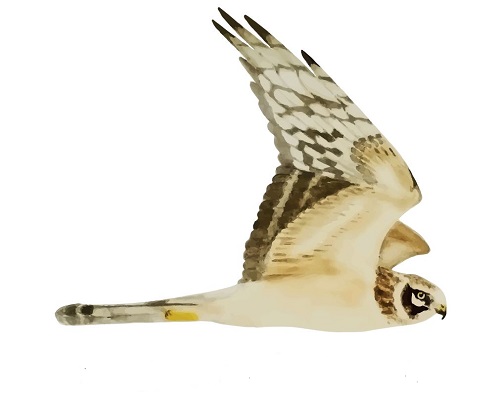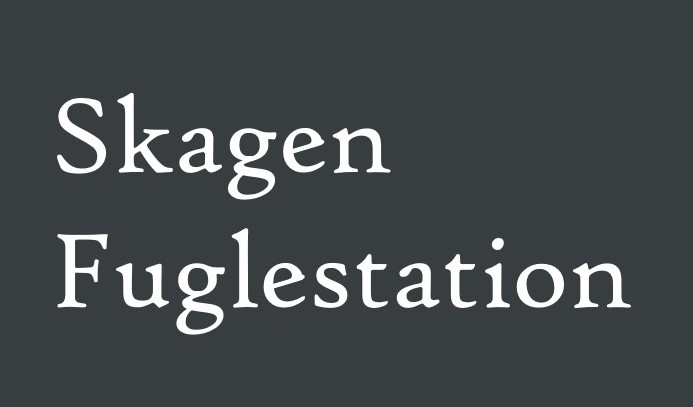Her på Skagen Fuglestations blog bringes korte nyheder i dagbogsformat om hændelser på fuglestationen.
Good luck my little friend
This morning was raining when we woke up to leave for work, so we all got to sleep for another hour or so and then spent a pleasant morning drinking coffee together around the table and chatting. When it cleared up a bit, I went to World’s End III with Janna and Florian for the last two hours of the standardized count. We had a nice time looking at many migrating scoters (Sortand), plenty of shorebirds on the beach (Sandløber, Stor præstekrave, Islandsk ryle), and one very cute Dværgryle. We also saw three types of auks (Lomvie, Alk, and Tjest), which was very nice, as well as two arctic skuas (Almindelig Kjove), one of which was a very fine adult light morph that was close to shore and flying slowly in the wind so we got a good look at it. Florian also spotted a strange wagtail from which he got some low-quality photos and recordings of. Back home we realised it could be an Eastern Yellow Wagtail (Østlig Gul Vipstjert)! He went back out this evening to find it again and in Florian fashion found it immediately and took nice photos and recordings. It turned out that the bird was a Citrine wagtail (Citronvipstjert)! What a nice rarity and not often seen in autumn!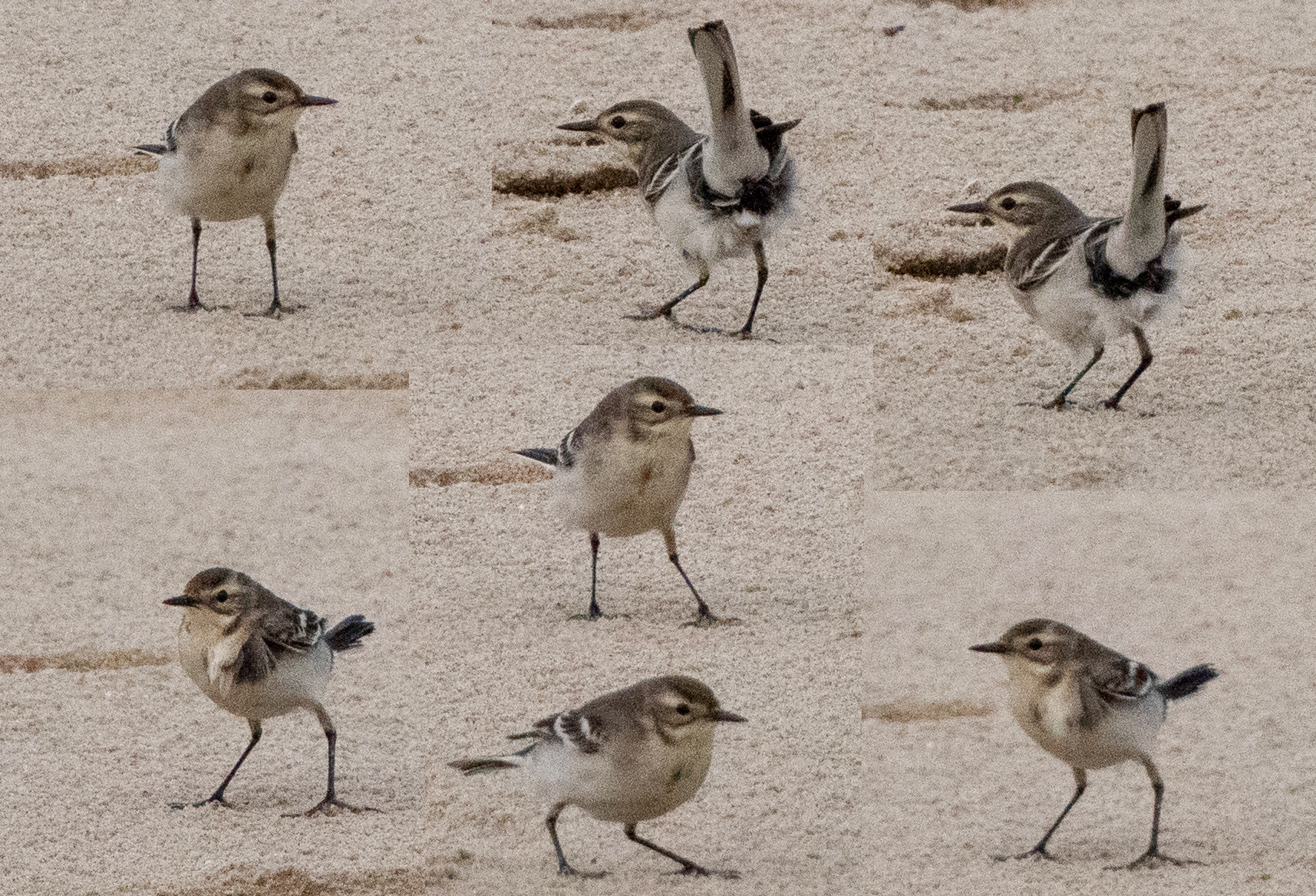
A collage of photos of the citrine wagtail taken in the evening
Clean sound recording from the evening
We stayed a little bit after the count to seawatch some more, and then I went down onto the beach to read some gull colour rings.
Meanwhile, Selina, Gabriel and Oscar met Simon at Kabeltromlen for ringing. There they were excitde to see one Isfugl (Kingfisher) and also managed to get a nice recording (Link here). It was very slow and they considered closing the nets when they found a Wryneck (Vendehals) in the net, the first of the year and probably the last. Lisa, Janna and Florian heeded the Zello call, which I missed, but luckily I decided to stop by anyway to see if they caught anything, so we all met at Kabeltromlen and got to see this absolutely stunning bird. We also got to see it twisting its neck in the way that originally got the bird its English name! Also a colloquial term for Torticollis (a human medical condition), “Wryneck” means a neck that is bent, twisted, or distorted at an odd angle. “Wry” as an adjective was used in the 16th century when the bird was first described in English, coming from the Middle English “wrien,” Old English “wrigian,” from the Proto-Germanic root “wrig” meaning to turn, bend, twist, go. The verb form of the word is long since obsolete, and the adjective is not often used, but the word remains in the name of the bird and the human neck condition. The name of the genus, Jynx, comes from the ancient Greek Iynx, which was the name for Wryneck that came from a mythological story. Iynx was a nymph who attempted to charm Zeus himself with magic, and for this crime Hera turned her into a bird (Iynx/Wryneck). The bird became a symbol of passionate and restless love, and iunx wheels, ceramic discs decorated with Wrynecks, were sold as magical love charms (or possibly as children’s toys).
Now back to the bird. A relative of woodpeckers, Wrynecks are most well known for their tendency to twist the neck and hiss when threatened, thought to be an imitation of a snake to scare potential predators. These sensual symbols of love enjoy feasting on insects that they capture with their sticky tongues. As a long-distance migrant, this lonely lover will be on its way to Africa for winter, and it has already cultivated plenty of fat for the journey. Good luck my little friend.
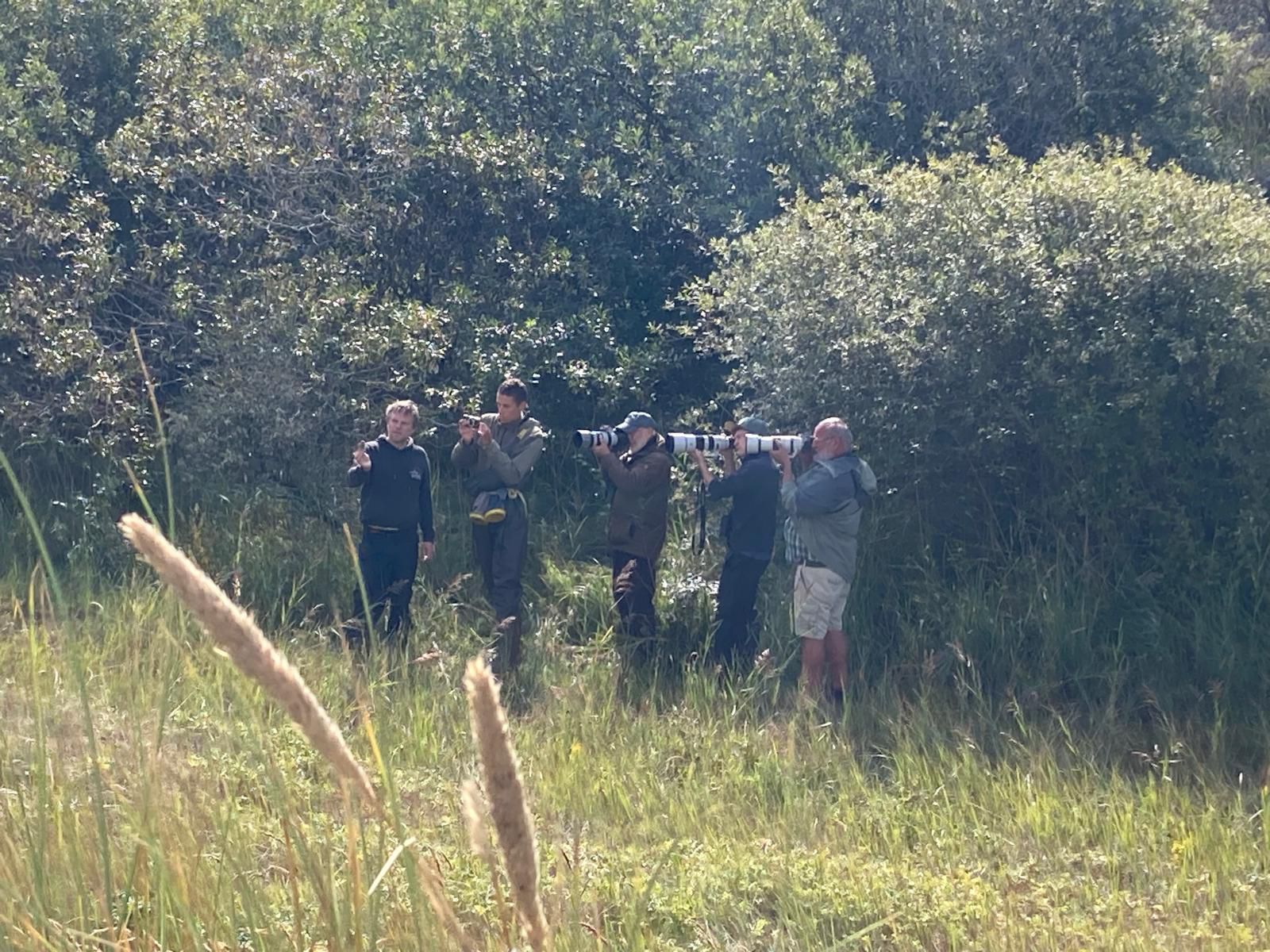
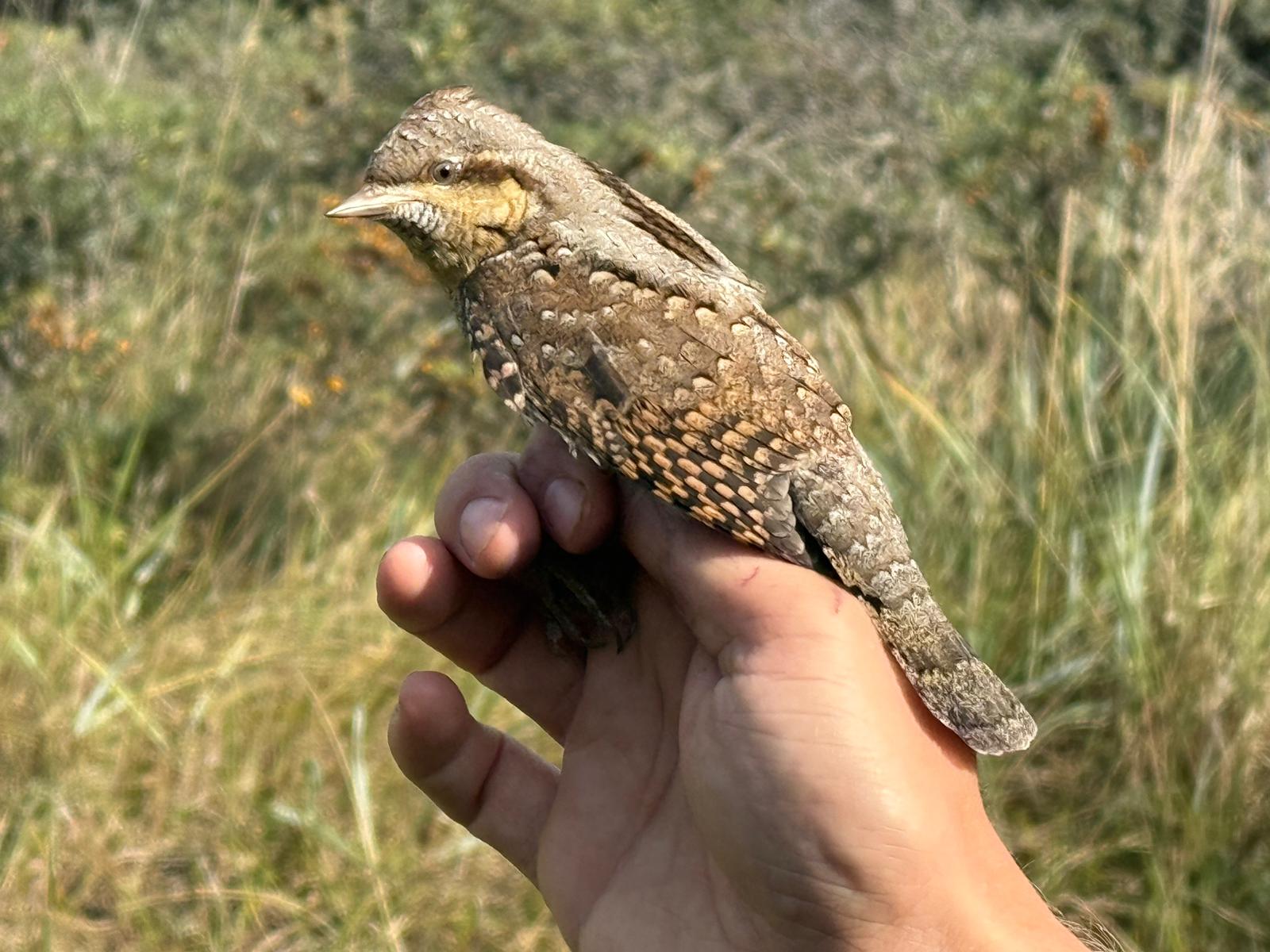
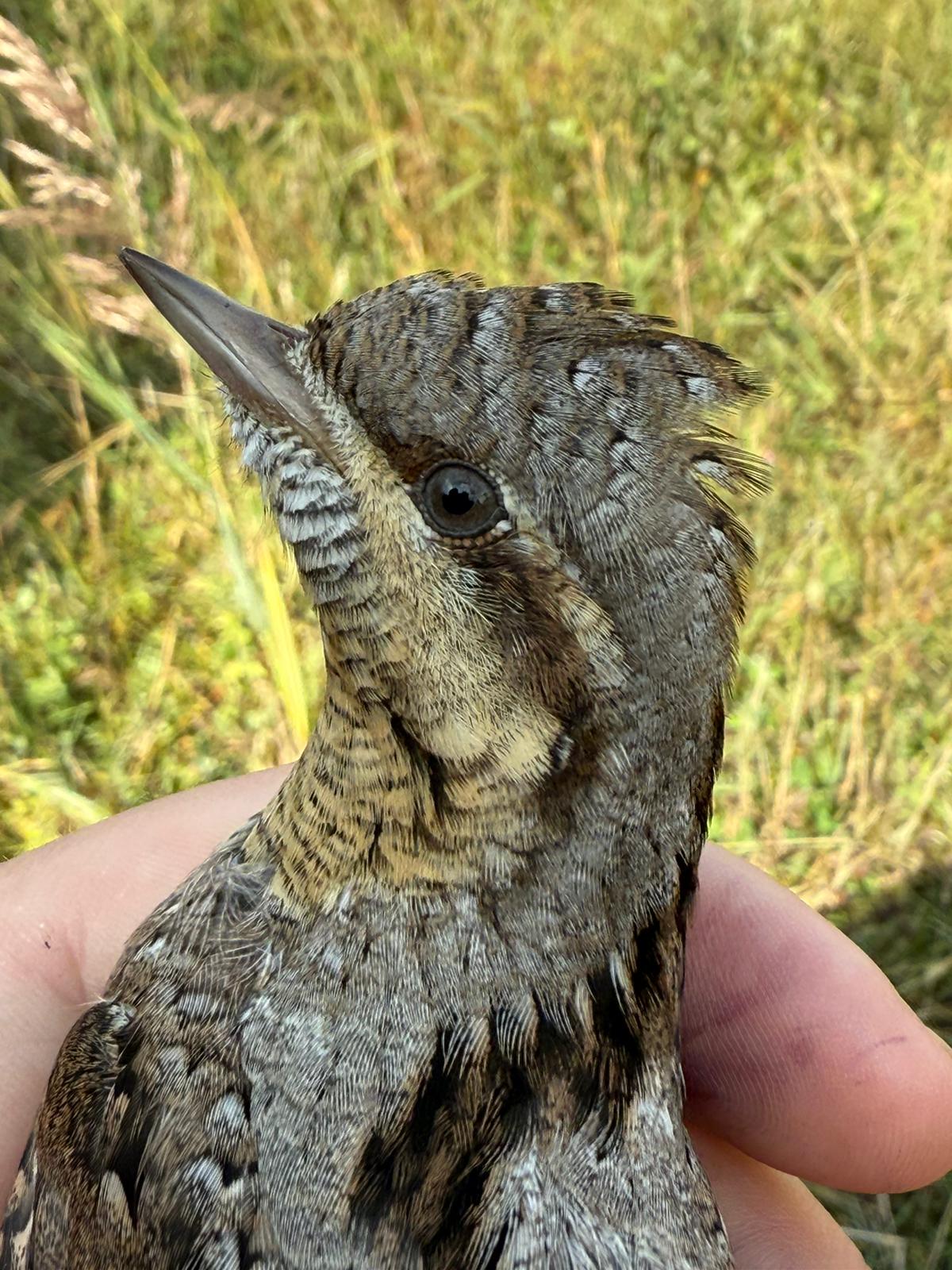 Ringing KAB
Ringing KAB
Munk 6
Sortmejse 5
Jernspurv 1
Rørsanger 1
Vendehals 1
Total: 14
Highlights from observation:
Citronvipstjert, Almindelig Kjove, Sandløber, Stor præstekrave, Islandsk ryle, Dværgryle
People: Gabriel Axelsson, Florian Hatt, Selina Veng, Janna Ouedraogo, Sarah Partridge, Óscar Pachá Guerras, Knud Pedersen, Lisa Vergin, Simon Christiansen.
Today’s observations in Dofbasen from observers in the area can be found here.
